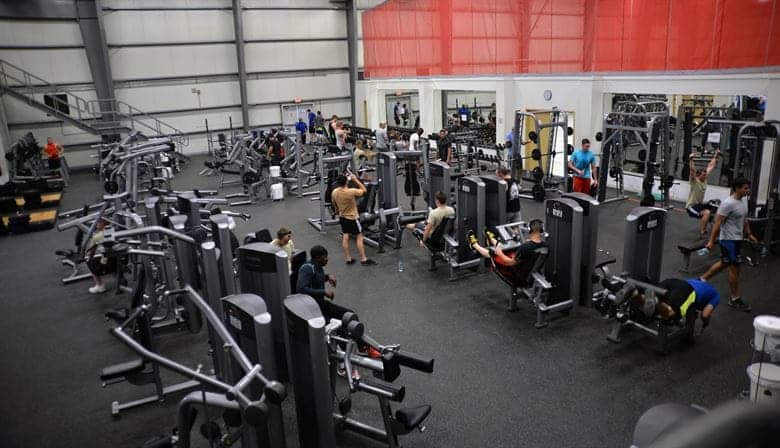What we already know
Being physically active is probably the number one thing that someone could do to fight off the negative cardiovascular effects of ageing. Exercise is also found to offer benefits in people with Type II diabetes, established heart disease, peripheral arterial disease and potentially conditions such as venous leg ulcers and rare diseases such as systemic sclerosis.
Simply put, exercising is extremely good for you.
The evidence is so compelling that health care systems around the world are offering exercise referral schemes to older people, patients and high-risk groups, to assist prevention and treatment.
The appearance of the COVID-19 virus, which is obvious that it is here to stay, forms a new reality for the whole globe. Understandably the main priority should be for everyone to assist in its containment. But as several countries are reporting uncontrolled outbreaks, we must focus on mitigation.
Maintaining a high level of personal hygiene is crucial. We must emphasize that washing our hands regularly and properly, avoiding touching our nose, mouth and eyes when being in the public and self-isolating if feeling unwell, are common-sense treaties, the importance of which finds now, new meaning.
But life can go on, and we don’t need to put everything on hold. One of the things that should continue to happen is people remaining physically active. This is particularly important now, when we need to build physical strengths and a strong immune system to minimise the effects of catching COVID-19 (or a number of other infectious diseases, as a matter of fact).
Should you work out?
Until recently people believed that although exercise is beneficial in the longer-term, it affects negatively our immune system in the short-term. However, a recent scientific review mounted evidence that suggests that exercise actually does the opposite, enhancing immune responses to bacterial, viral, and other antigens.

It is also known that physical activity helps fighting off anxiety (which can increase dramatically if you live in uncertainty!). This could be a key element when building a strategy to minimise the COVID-19 (and any other viral) health and societal effects in the long-term, once the spread of the disease calms down and the number of cases no longer peaks every day.
Although science hasn’t studied such conditions in the past in relation to physical activity and exercise, we do know that people who do train a lot, do tend to get less sick days – which although it might not say a lot for the general public, it is a starting point for thinking a forward strategy.
The evidence suggests that moderate exercise can boost your immune system, but if it’s too intense, it can backfire. COVID-19 or no COVID-19, moderate exercise is your friend.
What we should do
Even before the COVID-19 appearance, moving out and about – walking instead of taking the car, avoid prolong seating by taking several steps in and out the house or even dance when doing house chores have been recommended as means to “break” a sedentary lifestyle.
With COVID-19 being easier to spread in closed or confined spaces, where many people gather and close contact is unavoidable, the number one option is probably to move training outdoors. For those who can do that – whether this means jogging, taking long walks, hiking, exercise in open air gyms or taking place in park run activities – things are easier.
However, the question-mark remains for those who cannot: either because they physically can’t go out or because their condition requires some short of supervision. The matter of poor weather comes also into the equation – jogging or running in the park is easy when the weather is nice, but what can you do, when it is not?
Recent studies suggest that home-based interventions can be very beneficial particularly in elderly populations particularly when at risk of falls. This doesn’t mean offering continuous 1-to-1 supervision for people who can’t go out – instead focus will be given on overseeing their programme, motivating them and supporting them through the difficult “lifestyle change” phase. Therefore, benefits still exist, particularly when motivation is in place: there is nothing to prevent people to go back to the old “aerobic video” type of training. There are dozens of smart phone apps, online exercise dvds, videos and regimes which can help someone to build a complete exercise programme without the need of expensive equipment.
Working out in the COVID-19 outbreak
For those who are still willing to go to the gym things are a bit harder.
Gyms are some of the first facilities to shut down during a quarantine, because it’s so easy to spread infections. People are breathing intensely and sweating, and COVID-19 spreads best through droplets.
Nevertheless, common sense should prevail. If you want to clean the equipment before and after using it, your towel is not sufficient. Wipes are a bit better, but if you truly want to be safe, use alcohol based sanitizer (alcohol content >60%).
Avoid touching your face with your hands, and avoiding coming in contact with those that are obviously unwell. Avoid crowded classes and sharing equipment. If you can go to the gym at a time when it’s less crowded, it could work to reduce the risk.
Lastly, if ever there is a time to work out from home — it’s now. Health organizations are increasingly recommending social distancing as a way to avoid contacting and spreading the disease.
Exercise is good, and that shouldn’t be stopped. But it’s a serious situation with many uncertainties, so please deploy recommended precautions and heed the warning of health organizations.



